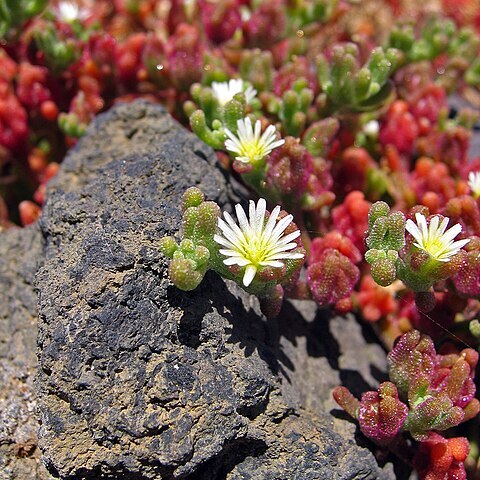Herbs, annual or perennial, usually short-lived, succulent, usually conspicuously papillate, glabrous. Roots fibrous. Stems prostrate to ascending. Leaves basal and cauline, alternate or opposite, sessile or petiolate; stipules absent; blade reddish with age, flat or terete, margins often undulate. Inflorescences terminal or axillary, flowers solitary or in cymes; bracts absent or 1-2, sessile or pedicellate. Flowers showy, 4-10[-20] mm diam., tubular; calyx lobes (4-) 5, 2 often leaflike; petals (including petaloid staminodia) 20-40[-150], distinct or connate into short tube, free, white, pink, or yellowish, linear; nectary glands 5; stamens 30[-120]; pistil (4-)5-carpellate; ovary half-inferior, (4-)5-loculed, convex; placentation axile; stigmas (4-)5, erect, filiform. Fruits capsules, persistent, valves (4-)5, with expanding interior keels when moistened, forming capsule lids when dried, dehiscence loculicidal. Seeds 100-200, black or dark [light] reddish brown [ochre or whitish], compressed [globose], often with 1 straight edge, 1 mm, smooth to rough with minute tubercles; arils absent.
More
Prostrate or erect succulent herbs, annual or biennial, conspicuously papillose. Branches angled or terete. Leaves opposite on lower branches, alternate on flowering branches, fleshy, semiterete or flat, sessile or petiolate. Flowers solitary, axillary, sessile or shortly pedicellate. Sepals 5, 2 large and 3 small, the smaller with membranous margins. Petal-like staminodes many, white; stamens many. Styles 5; ovary inferior or partly superior; locules 5; placentation axile. Fruit a hygroscopic capsule; valves winged; expanding keels contiguous; locules without roofs; placental tubercles absent. Seeds many, D-shaped, minutely tuberculate, light or dark brown.

